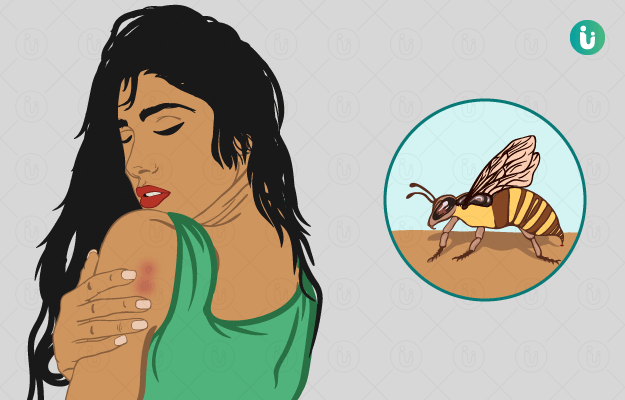What are insect bites and stings?
Insect bites and stings are extremely common and can occur at home or outdoors. In many cases, the bites and stings subside within a few hours or days and do not evolve into serious conditions. In some cases, however, you may experience a severe reaction or even have an illness like malaria or Lyme disease.
What are the main signs and symptoms?
While there are typical signs that each insect bite or sting can cause, there are some general symptoms common to most bites and stings caused by insects. You will usually find a small lump or bump in the skin which is red. The site of the insect bite or sting can be irritable, itchy or even quite painful. In some cases, there may be a lot of heat generated at the site, or even a feeling of numbness. A simple bite can be cared for at home. The most pronounced signs may clear away in a few hours, and all traces will be gone in a day or so. Those who are highly sensitive to bites and stings may experience what is known as an anaphylactic shock, where the throat feels constricted and breathing becomes difficult.
What are its main causes?
The most common insect bites and stings include those caused by wasps, ticks, fleas, bedbugs, mosquitoes, bees and hornets. When bitten or stung by one of these insects, venom is injected into the body, and the body responds by producing one of the symptoms we commonly see. When the venom contains any infection-causing germs, the person may suffer from a disease.
How is it diagnosed and treated?
It is fairly easy for a doctor to diagnose an insect bite or sting upon examination, although it may prove useful if the person is able to identify the insect they were bitten by.
Most insect bites and stings only require simple home care. Washing the area thoroughly, using an ice pack to relieve the irritation and heat or even applying a soothing cream can provide instant relief. If there is persistent itching, a paste made of baking soda and water can be applied.
If the symptoms and condition of the person are serious, immediate medical care must be given. This includes loosening the clothing, turning the victim onto a side or even performing CPR. In the case of bee stings, removing the stinger is important to prevent further absorption of the venom.
Anti-histamines and painkillers can help reduce the pain, swelling and itching.

 Doctors for Insect bites and stings
Doctors for Insect bites and stings  OTC Medicines for Insect bites and stings
OTC Medicines for Insect bites and stings



















